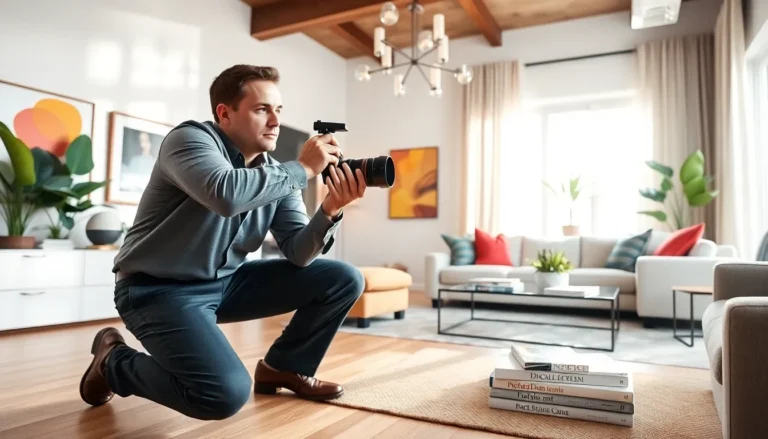Maximalist design and decor is all about going big, bold, and bright. Picture an art installation in your living room that screams “this is my personality.” If you’ve ever walked into a space bursting with color, patterns, and an eclectic assortment of items that practically dance together, you’ve just stepped into a maximalist wonderland. Think of it as the design equivalent of telling your housemates, “I don’t just like pizza, I want the pepperoni, the extra cheese, and let’s throw in some pineapple for good measure.” This article dives into the world of maximalism, where more truly is more, and you can celebrate your unique taste without restraint.
Table of Contents
ToggleUnderstanding Maximalism

Maximalism embraces abundance across design, art, and architecture. Unlike minimalism, which advocates simplicity, maximalism invites diversity and extravagance. This approach finds its roots in various historical and cultural contexts, blending influences from different eras and styles to create immersive environments.
The History Of Maximalist Design
The origins of maximalist design can be traced back to the Baroque era, where opulence was celebrated in grand architecture and interiors. This period emphasized rich textures, numerous colors, and dramatic contrasts, setting a precedent for maximalist aesthetics. Fast forward to the 20th century, trends such as Art Deco and Postmodernism continued this legacy, flaunting excess and playful exuberance. Today, readers may find modern maximalism taking inspiration from global influences, from vintage bohemian finds to contemporary art pieces.
Key Characteristics Of Maximalist Decor
Maximalism is defined by its layering of colors, patterns, and textures. It’s common to see surprisingly harmonious groupings of items, creating visual intrigue. Personalized collections, vintage textiles, and bold prints often vie for attention, all while telling a story. One vital aspect is the ability to embrace chaos without losing the essence of the space, showcasing individuality and creativity above all.
The Role Of Color In Maximalist Design
Color plays a fundamental role in maximalism, transforming any mundane space into a realm of vibrancy. Think of your favorite childhood candy store, bright colors everywhere, inviting you to explore every corner.
Combining Patterns And Textures
In maximalist design, color melds perfectly with patterns and textures. Stripes, florals, and geometric shapes can happily coexist within the same area. The trick? Choose a cohesive color palette as a base to join eclectic elements. For instance, pairing a bold floral wallpaper with a striped couch in complementary hues creates a lively yet balanced aesthetic. The key is experimenting and allowing one’s imagination to run wild, ensuring nothing feels too forced or out of place.
Furniture Choices For Maximalist Spaces
When selecting furniture for a maximalist space, think outside traditional boundaries. Unique shapes, oversized sofas, and statement pieces become essential in this design approach. It’s not just about filling a space but also about making it an adventure for the eyes.
Accessorizing A Maximalist Room
Accessorizing is where the magic truly happens. Layering rugs, mixing textures, and adding artwork can completely transform an area. Grouping together various collectibles or curated artworks can tell a story while also serving as conversation starters. For example, a bold sculpture on a vibrant coffee table surrounded by framed art can draw the eye in every direction, sparking curiosity about each piece.
Creating Balance In Maximalist Design
Creating balance in a maximalist environment may seem paradoxical, but it’s key to mastering the look. The heart of maximalism thrives on the idea that an overabundance of items doesn’t mean chaos, rather, it can be harmonious.
Maximalism Vs. Minimalism: A Comparison
While minimalism promotes tranquility and simplicity, maximizing design celebrates life in all its splendor. Maximalism is vibrant and diverse, allowing for storytelling through varied decor items. Think of minimalism as a serene landscape, while maximalism resembles a bustling, colorful carnival. Both hold their charm, appealing to different styles and preferences.



